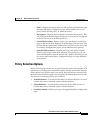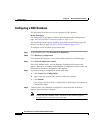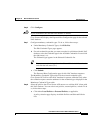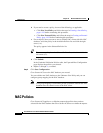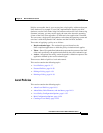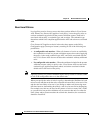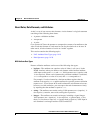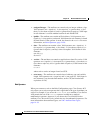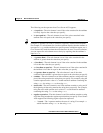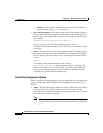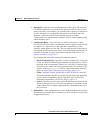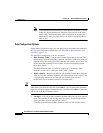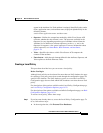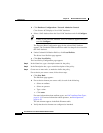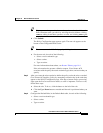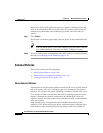
14-21
User Guide for Cisco Secure ACS for Windows Server
78-16592-01
Chapter 14 Network Admission Control
NAC Policies
The following are the operators that Cisco Secure ACS supports:
• = (equal to)—The rule element is true if the value contained in the attribute
is exactly equal to the value that you specify.
• != (not equal to)—The rule element is true if the value contained in the
attribute does not equal to the value that you specify.
Tip Using the != operator can lead to confusion, especially with boolean attributes.
For example, if a rule element for a boolean attribute requires that the attribute is
not equal to
false and the attribute in a specific posture validation request was 1,
Cisco Secure ACS would evaluate the rule element to be true. To avoid confusion,
you can express the rule element more clearly by requiring that the attribute is
equal to true.
• > (greater than)—The rule element is true if the value contained in the
attribute is greater than the value that you specify.
• < (less than)—The rule element is true if the value contained in the attribute
is less than the value that you specify.
• <= (less than or equal to)—The rule element is true if the value contained in
the attribute is less than or equal to the value that you specify.
• >= (greater than or equal to)—The rule element is true if the value
contained in the attribute is greater than or equal to the value that you specify.
• contains—The rule element is true if the attribute contains a string and if any
part of that string matches the string that you specify. For example, using the
contains operator and a value of
sc would match an attribute containing the
string
Cisco, the string scsi, or the string disc.
• starts-with—The rule element is true if the attribute contains a string and if
the beginning of that string matches the string that you specify. For example,
using the starts-with operator and a value of
Ci would match an attribute
containing the string
Cisco or the string Ciena.
• regular-expression—The rule element is true if the attribute contains a string
and if the string matches the regular expression that you specify. Cisco Secure
ACS supports the following regular expression operators:
–
^ (caret)—The ^ operator matches the start of a string. For example ^Ci
would match the string
Cisco or the string Ciena.



